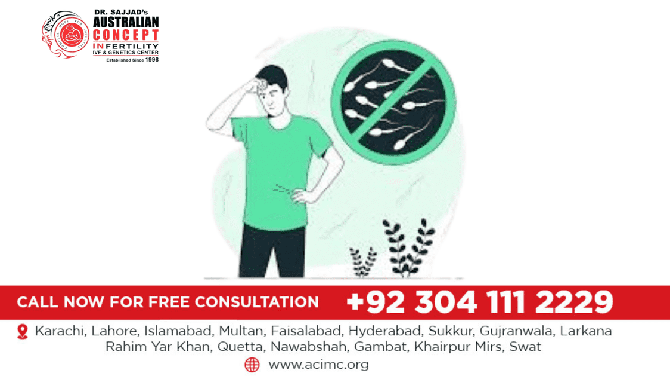
Which treatment is best for azoospermia
Azoospermia is one of the most challenging male fertility conditions, defined by the absence of sperm in semen. It affects around 1% of all men and up to 15% of infertile men. Despite being a serious diagnosis, many treatment options are available today that allow men with azoospermia to become biological fathers. The key to success lies in understanding the underlying cause and selecting the most suitable treatment.
Understanding Azoospermia
Azoospermia can be classified into two main types:
Obstructive Azoospermia (OA):
This occurs when sperm production in the testicles is normal, but a blockage in the reproductive tract prevents sperm from being released in the semen.
Non-Obstructive Azoospermia (NOA):
This type is due to poor or absent sperm production within the testes, often caused by hormonal problems, genetic conditions, or testicular damage.
Determining which type a man has is essential before treatment begins, as it directly affects the choice of therapy.
Diagnosis Before Treatment
A fertility specialist begins by conducting several diagnostic tests, such as:
Semen analysis to confirm the absence of sperm.
Hormonal tests (FSH, LH, testosterone) to evaluate hormone levels.
Genetic testing to detect abnormalities like Y-chromosome microdeletions or Klinefelter’s syndrome.
Testicular biopsy to check if sperm are being produced within the testes.
These evaluations help doctors decide whether the azoospermia is treatable and which treatment will offer the best results.
Treatment Options for Azoospermia
The treatment for azoospermia depends on its cause. Below are the most effective options available today:
1. Surgical Correction (for Obstructive Azoospermia)
If a blockage is found, surgery can often restore sperm flow.
Vasovasostomy: Reconnects the severed ends of the vas deferens (after a vasectomy).
Epididymovasostomy: Bypasses a blockage in the epididymis.
These microsurgical procedures can allow natural conception in many cases.
2. Hormonal Therapy
In some men, azoospermia results from hormonal imbalances that affect sperm production.
Treatment includes hormone replacement or medications that stimulate sperm development, such as gonadotropins (FSH and hCG) or clomiphene citrate.
This therapy is most successful when the pituitary gland or hypothalamus is the root of the problem.
3. Sperm Retrieval Procedures
When sperm are produced but not present in semen, advanced techniques are used to retrieve them directly from the testes. These include:
TESA (Testicular Sperm Aspiration)
TESE (Testicular Sperm Extraction)
Micro-TESE (Microsurgical Testicular Sperm Extraction)
Among these, Micro-TESE is often considered the best technique for non-obstructive azoospermia because it uses a microscope to locate and extract tiny areas of sperm production, maximizing success while minimizing damage to the testicular tissue.
4. Assisted Reproductive Techniques (ART)
Once sperm are retrieved, assisted reproductive technologies help achieve pregnancy.
ICSI (Intracytoplasmic Sperm Injection): This method injects a single sperm directly into an egg during IVF.
ICSI has revolutionized male infertility treatment and gives men with azoospermia a real chance to have biological children, even with very few sperm cells available.
Lifestyle Modifications and Supportive Care
In addition to medical treatments, lifestyle changes can support fertility health:
Maintaining a healthy diet and body weight.
Avoiding alcohol, smoking, and exposure to heat or radiation.
Managing stress and getting adequate sleep.
These adjustments can sometimes improve sperm production, especially when combined with medical treatment.
Prognosis and Success Rates
Success depends on the type and cause of azoospermia:
In obstructive cases, surgery and sperm retrieval have very high success rates.
In non-obstructive cases, Micro-TESE combined with ICSI offers the best outcome for achieving pregnancy.
Advances in reproductive medicine mean that even men once considered completely infertile now have treatment options that lead to fatherhood.
Why Choosing the Right Clinic Matters
Selecting the right medical center is one of the most critical steps when dealing with azoospermia. A specialized infertility clinic in Lahore equipped with advanced technology and experienced specialists can make a significant difference in outcomes. These centers offer precise diagnosis, skilled microsurgical procedures, and comprehensive fertility support — all essential for successful treatment.
A top-rated clinic provides individualized care plans based on each patient’s condition. Their experienced doctors, embryologists, and lab technicians work together to ensure that sperm retrieval and fertilization are handled with the highest level of expertise and precision.
Emotional and Psychological Support
Dealing with azoospermia can be emotionally challenging for both partners. Feelings of anxiety, frustration, and self-doubt are common. Therefore, counseling plays an essential role in the treatment journey. Fertility specialists often recommend couple counseling to help partners communicate openly and make informed decisions together.
A supportive environment can significantly reduce stress, which in turn can positively influence treatment outcomes. Many clinics also offer dedicated counselors who guide patients through every step of their fertility journey.
When to See a Specialist
Men should consider consulting an infertility specialist if they have been trying to conceive for more than a year without success or have symptoms such as:
Low semen volume or ejaculation issues.
History of testicular injury or surgery.
Hormonal imbalances or abnormal genetic findings.
Prior infections or exposure to toxins that may affect fertility.
Early consultation helps identify the cause of azoospermia promptly and increases the chances of successful treatment.
Conclusion
The best treatment for azoospermia depends on whether it is obstructive or non-obstructive. With modern techniques like Micro-TESE and ICSI, many men can successfully achieve pregnancy with their partners. Early diagnosis and expert medical care are crucial in selecting the right path toward parenthood.
For More Details: https://acimc.org/service/azoospermia-treatment/
Understanding Azoospermia
Azoospermia can be classified into two main types:
Obstructive Azoospermia (OA):
This occurs when sperm production in the testicles is normal, but a blockage in the reproductive tract prevents sperm from being released in the semen.
Non-Obstructive Azoospermia (NOA):
This type is due to poor or absent sperm production within the testes, often caused by hormonal problems, genetic conditions, or testicular damage.
Determining which type a man has is essential before treatment begins, as it directly affects the choice of therapy.
Diagnosis Before Treatment
A fertility specialist begins by conducting several diagnostic tests, such as:
Semen analysis to confirm the absence of sperm.
Hormonal tests (FSH, LH, testosterone) to evaluate hormone levels.
Genetic testing to detect abnormalities like Y-chromosome microdeletions or Klinefelter’s syndrome.
Testicular biopsy to check if sperm are being produced within the testes.
These evaluations help doctors decide whether the azoospermia is treatable and which treatment will offer the best results.
Treatment Options for Azoospermia
The treatment for azoospermia depends on its cause. Below are the most effective options available today:
1. Surgical Correction (for Obstructive Azoospermia)
If a blockage is found, surgery can often restore sperm flow.
Vasovasostomy: Reconnects the severed ends of the vas deferens (after a vasectomy).
Epididymovasostomy: Bypasses a blockage in the epididymis.
These microsurgical procedures can allow natural conception in many cases.
2. Hormonal Therapy
In some men, azoospermia results from hormonal imbalances that affect sperm production.
Treatment includes hormone replacement or medications that stimulate sperm development, such as gonadotropins (FSH and hCG) or clomiphene citrate.
This therapy is most successful when the pituitary gland or hypothalamus is the root of the problem.
3. Sperm Retrieval Procedures
When sperm are produced but not present in semen, advanced techniques are used to retrieve them directly from the testes. These include:
TESA (Testicular Sperm Aspiration)
TESE (Testicular Sperm Extraction)
Micro-TESE (Microsurgical Testicular Sperm Extraction)
Among these, Micro-TESE is often considered the best technique for non-obstructive azoospermia because it uses a microscope to locate and extract tiny areas of sperm production, maximizing success while minimizing damage to the testicular tissue.
4. Assisted Reproductive Techniques (ART)
Once sperm are retrieved, assisted reproductive technologies help achieve pregnancy.
ICSI (Intracytoplasmic Sperm Injection): This method injects a single sperm directly into an egg during IVF.
ICSI has revolutionized male infertility treatment and gives men with azoospermia a real chance to have biological children, even with very few sperm cells available.
Lifestyle Modifications and Supportive Care
In addition to medical treatments, lifestyle changes can support fertility health:
Maintaining a healthy diet and body weight.
Avoiding alcohol, smoking, and exposure to heat or radiation.
Managing stress and getting adequate sleep.
These adjustments can sometimes improve sperm production, especially when combined with medical treatment.
Prognosis and Success Rates
Success depends on the type and cause of azoospermia:
In obstructive cases, surgery and sperm retrieval have very high success rates.
In non-obstructive cases, Micro-TESE combined with ICSI offers the best outcome for achieving pregnancy.
Advances in reproductive medicine mean that even men once considered completely infertile now have treatment options that lead to fatherhood.
Why Choosing the Right Clinic Matters
Selecting the right medical center is one of the most critical steps when dealing with azoospermia. A specialized infertility clinic in Lahore equipped with advanced technology and experienced specialists can make a significant difference in outcomes. These centers offer precise diagnosis, skilled microsurgical procedures, and comprehensive fertility support — all essential for successful treatment.
A top-rated clinic provides individualized care plans based on each patient’s condition. Their experienced doctors, embryologists, and lab technicians work together to ensure that sperm retrieval and fertilization are handled with the highest level of expertise and precision.
Emotional and Psychological Support
Dealing with azoospermia can be emotionally challenging for both partners. Feelings of anxiety, frustration, and self-doubt are common. Therefore, counseling plays an essential role in the treatment journey. Fertility specialists often recommend couple counseling to help partners communicate openly and make informed decisions together.
A supportive environment can significantly reduce stress, which in turn can positively influence treatment outcomes. Many clinics also offer dedicated counselors who guide patients through every step of their fertility journey.
When to See a Specialist
Men should consider consulting an infertility specialist if they have been trying to conceive for more than a year without success or have symptoms such as:
Low semen volume or ejaculation issues.
History of testicular injury or surgery.
Hormonal imbalances or abnormal genetic findings.
Prior infections or exposure to toxins that may affect fertility.
Early consultation helps identify the cause of azoospermia promptly and increases the chances of successful treatment.
Conclusion
The best treatment for azoospermia depends on whether it is obstructive or non-obstructive. With modern techniques like Micro-TESE and ICSI, many men can successfully achieve pregnancy with their partners. Early diagnosis and expert medical care are crucial in selecting the right path toward parenthood.
For More Details: https://acimc.org/service/azoospermia-treatment/


